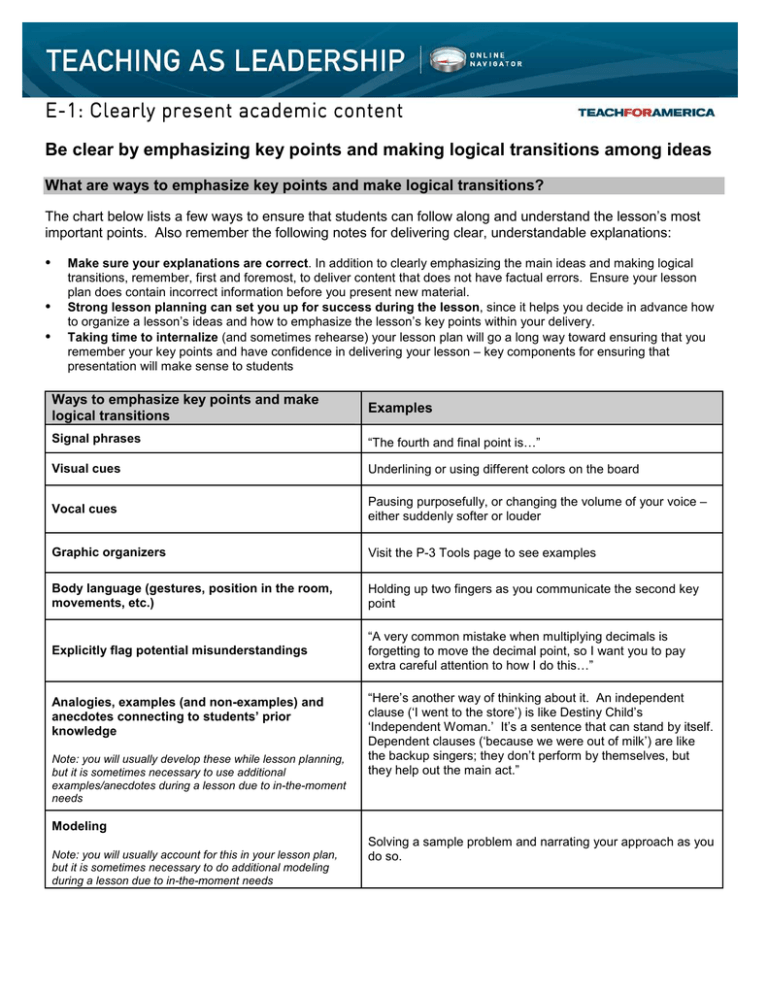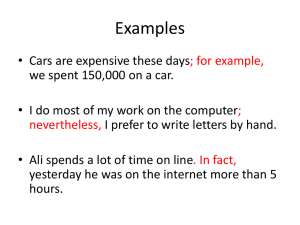E-1: Clearly present academic content early present academic
advertisement

E-1: Clearly Cl early present academic content Be clear by emphasizing key points and making logical transitions among ideas What are ways to emphasize key points and make logical transitions? The chart below lists a few ways to ensure that students can follow along and understand the lesson’s most important points. Also remember the following notes for delivering clear, understandable explanations: • • • Make sure your explanations are correct. In addition to clearly emphasizing the main ideas and making logical transitions, remember, first and foremost, to deliver content that does not have factual errors. Ensure your lesson plan does contain incorrect information before you present new material. Strong lesson planning can set you up for success during the lesson, since it helps you decide in advance how to organize a lesson’s ideas and how to emphasize the lesson’s key points within your delivery. Taking time to internalize (and sometimes rehearse) your lesson plan will go a long way toward ensuring that you remember your key points and have confidence in delivering your lesson – key components for ensuring that presentation will make sense to students Ways to emphasize key points and make logical transitions Examples Signal phrases “The fourth and final point is…” Visual cues Underlining or using different colors on the board Vocal cues Pausing purposefully, or changing the volume of your voice – either suddenly softer or louder Graphic organizers Visit the P-3 Tools page to see examples Body language (gestures, position in the room, movements, etc.) Holding up two fingers as you communicate the second key point Explicitly flag potential misunderstandings “A very common mistake when multiplying decimals is forgetting to move the decimal point, so I want you to pay extra careful attention to how I do this…” Analogies, examples (and non-examples) and anecdotes connecting to students’ prior knowledge Note: you will usually develop these while lesson planning, but it is sometimes necessary to use additional examples/anecdotes during a lesson due to in-the-moment needs “Here’s another way of thinking about it. An independent clause (‘I went to the store’) is like Destiny Child’s ‘Independent Woman.’ It’s a sentence that can stand by itself. Dependent clauses (‘because we were out of milk’) are like the backup singers; they don’t perform by themselves, but they help out the main act.” Modeling Note: you will usually account for this in your lesson plan, but it is sometimes necessary to do additional modeling during a lesson due to in-the-moment needs Solving a sample problem and narrating your approach as you do so.


